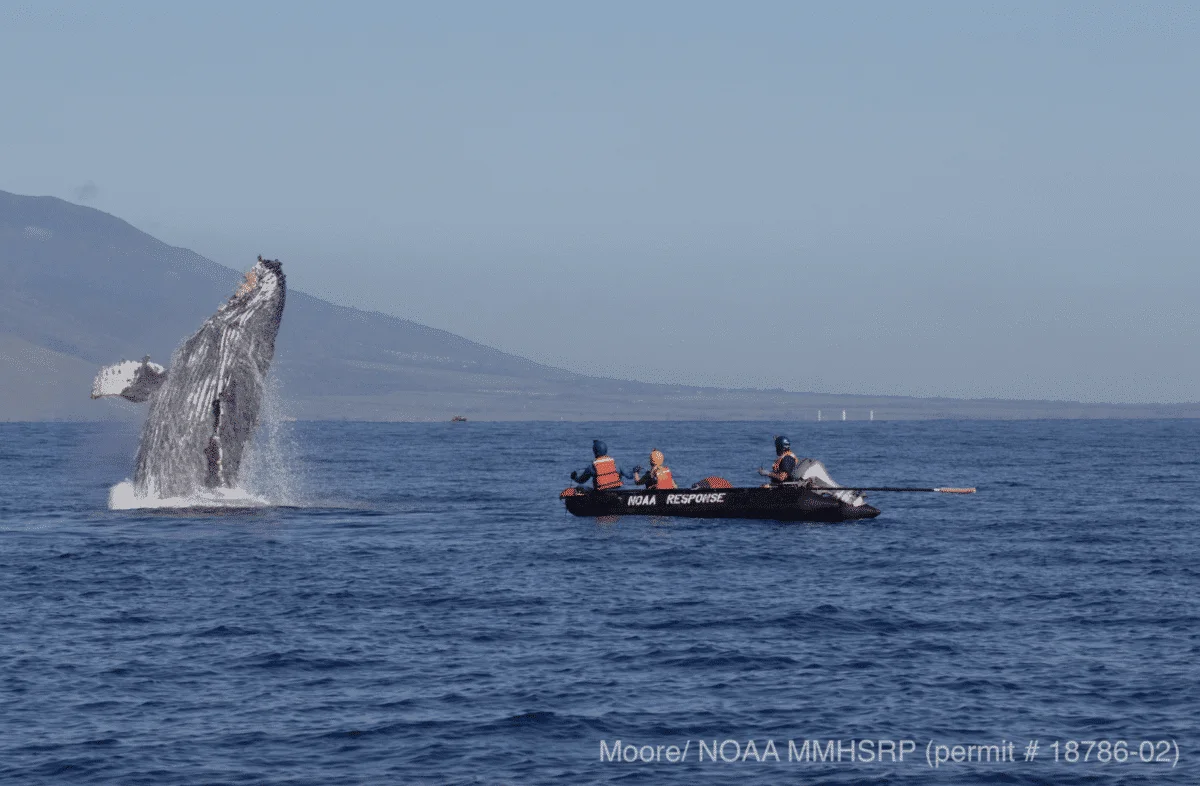Our expert-vetted content is grounded in current scientific publications, yet we acknowledge science’s ever-evolving nature. Read our full editorial and disclosure policy.
Whales, the largest mammals on Earth, captivate human fascination with their immense size, unique adaptations, and enigmatic behaviors. Humans are drawn to whales not only for their sheer size but also for their complex social structures and song-based method of communicating. Understanding whale behavior is crucial for marine scientists, aiding in the conservation of these keystone species and their ecosystems. It uncovers insights into their physical health, ecological roles, migratory patterns and responses to human and environmental changes – fostering a deeper appreciation for the interconnectedness of marine life and the significance of preserving these gentle giants and their habitats.
While whales are complex creatures that exude a multitude of different behaviors, this article will only list the those that can be seen by people from the surface. These aerial behaviors are important for a number of reasons including communication, hunting, parasite removal and play.
1. Breaching
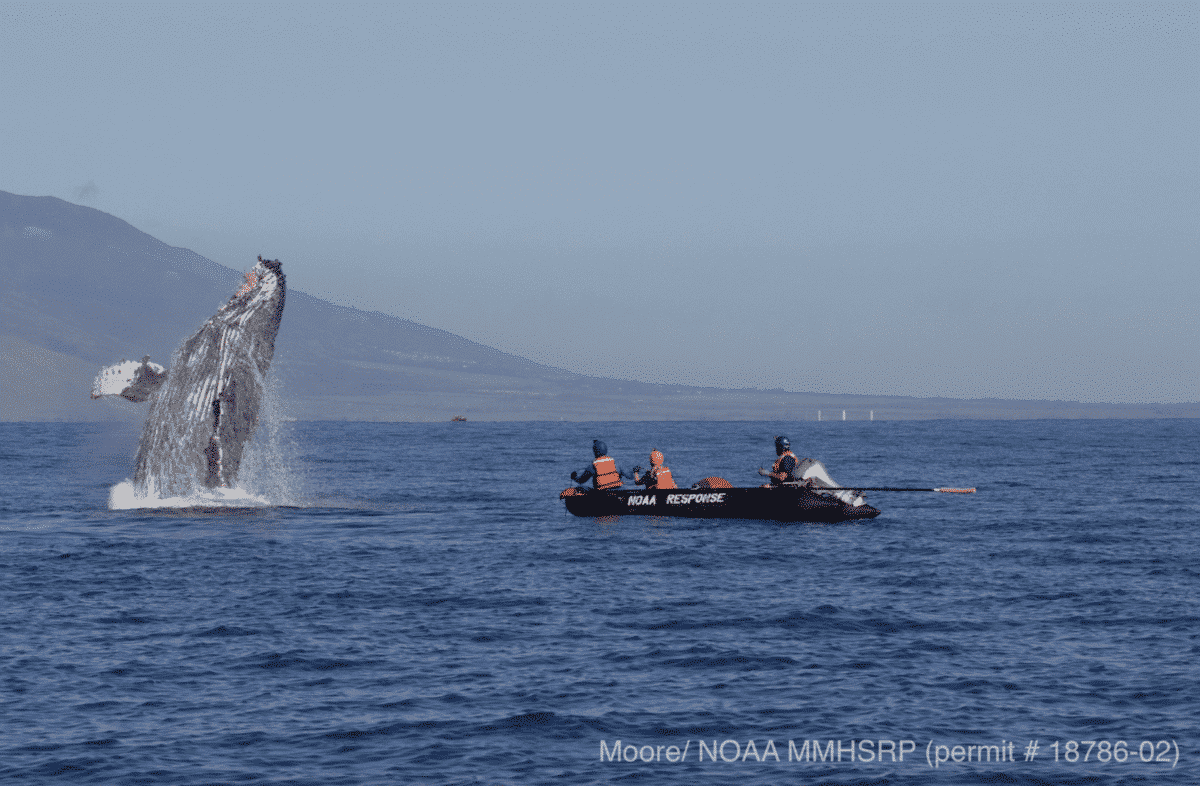
Whale breaching, a captivating behavior witnessed across various whale species, is often associated with baleen whales such as humpbacks, right whales, and sperm whales. Other baleen and toothed whale species also breach, but much more rarely. Beyond being a breath-taking spectacle, scientists suggest that breaching serves a communicative function, with the thunderous splashes and bubble creation acting as effective honest signals to other whales that can be transmitted over long distances underwater. This behavior is notably prevalent in more socially active species, highlighting its potential role in inter-whale communication. Breaching may also play a role in ectoparasite removal, particularly among heavily infested baleen whales, as the physical force generated during a breach can dislodge parasites. Additionally, experts suggest that breaching could aid in hunting strategies by stunning, herding, or trapping prey. Young whales are observed to engage in breaching as play, fostering skill development for later life. The mechanics of a breach are as diverse as the reasons behind it, encompassing various styles like lateral and vertical breaches, each showcasing the whales’ power and surprising agility.
Read more about whale breaching behavior here.
2. Lunging
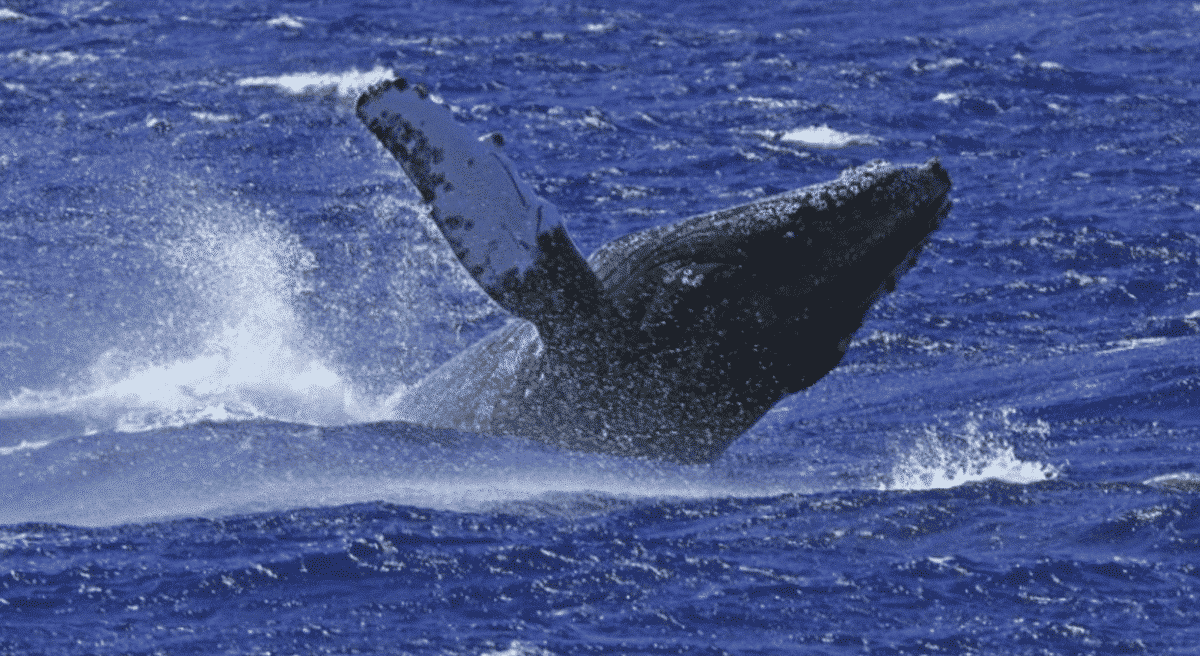
Whale lunging, often considered a lower-energy version of a potential breach, serves various purposes within the context of whale behavior. While it may signify a decreased state of alertness or social engagement, lunging can also be a form of directed behavior, signaling aggression towards other individuals. Interestingly, dolphins engaging in playful interactions around the eyes and mouths of whales can provoke lunging responses. This behavior is thought to be a strategic move by the dolphins to ride the bow-wave created by the lunging whale. The act of lunging, therefore, is not solely an indicator of diminished awareness or sociability but rather a versatile behavior with potential social and interactive dimensions.
3. Lobtailing
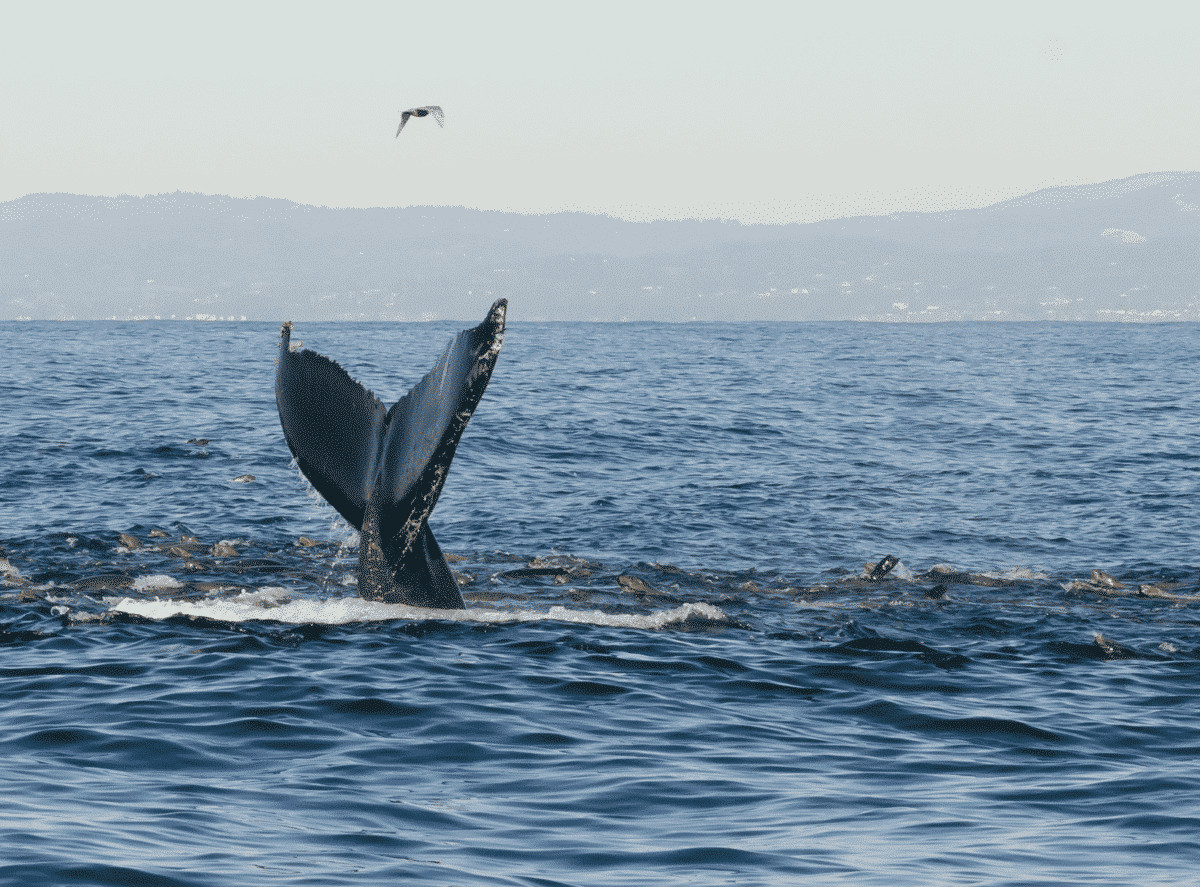
Lobtailing is the act of forcefully slapping the tail (or fluke) onto the water’s surface. Typically, large whales adopt a vertical orientation in the water, sharply bending their tail stocks at the surface to produce a resounding slap. In contrast, smaller-toothed whales tend to have a more parallel orientation with less pronounced tail bending. The time lapse between slaps can vary greatly, ranging from 10-second intervals between slaps to one or more slaps per second. Despite the audible “crack” sound produced in the air, lobtailing is not very loud underwater, unlike the vocalizations of whales. The prevalence of lobtailing varies among species, with sperm, right, bowhead, humpback, and gray whales frequently engaging in this behavior.
4. Spyhopping
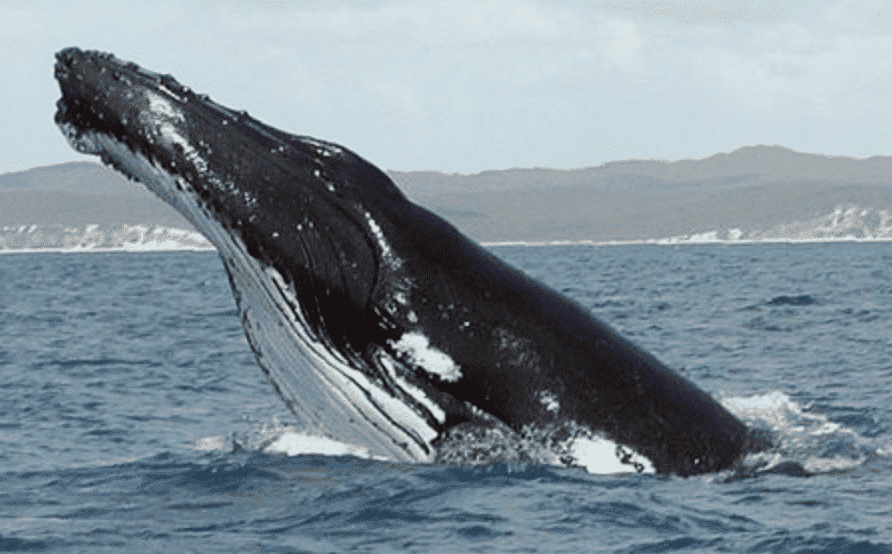
Whale spyhopping involves the animal lifting its head out of the water, often in a slow and deliberate manner, reaching a nearly or fully vertical position, typically just to the level of the flippers. The term “eye out” might more accurately capture this activity, as the exact purpose of this behavior remains uncertain—but it is believed to simply allow the cetacean to observe its aerial surroundings. Spyhopping may include a gradual rotation of the body, suggesting that the whale is actively surveying its in-air environment during this process. This behavior offers a unique glimpse into the cognitive and sensory capabilities of these marine mammals, as they employ spyhopping as a means to interact with and gather information about their surroundings.
5. Spouting
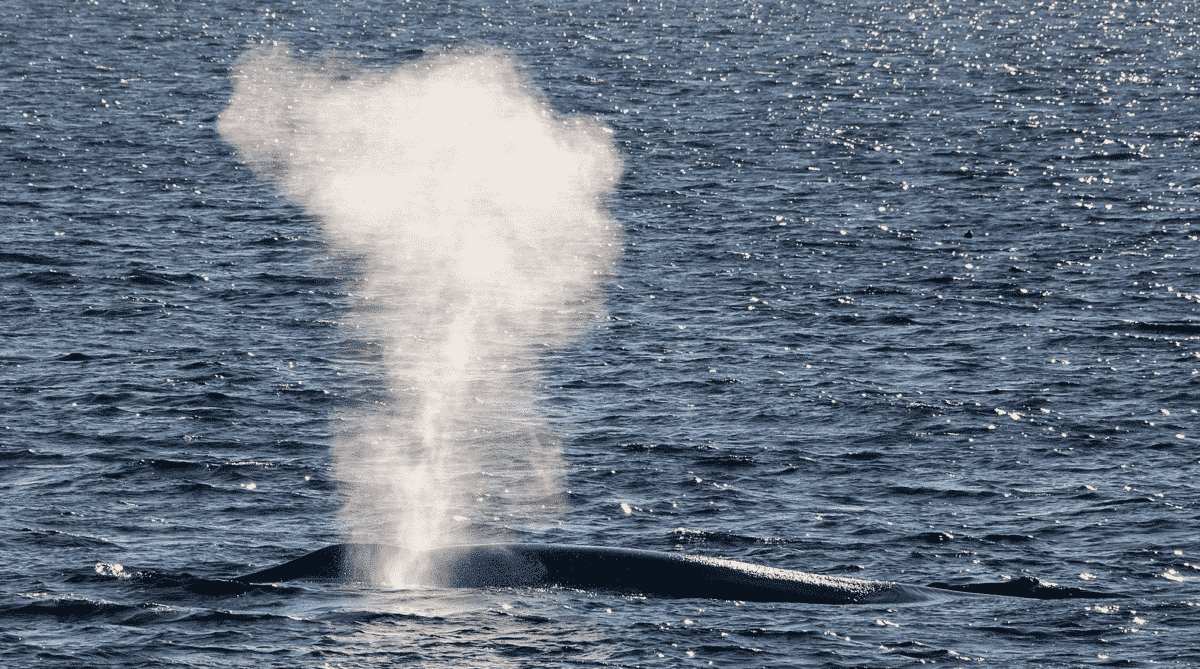
Whale spouting is the process whereby whales expel air through their blowholes located at the tops of their heads. This behavior is essential for these marine mammals to breathe as they come to the surface. When a whale surfaces, it exhales by expelling what looks to be a spray of water vapor from its blowhole. This mist-like spray is made up of air, water vapor, mucus and oils. Each species of whale has a distinctive spout pattern, which aids whale watchers and researchers alike in identifying different whale species.
6. Logging
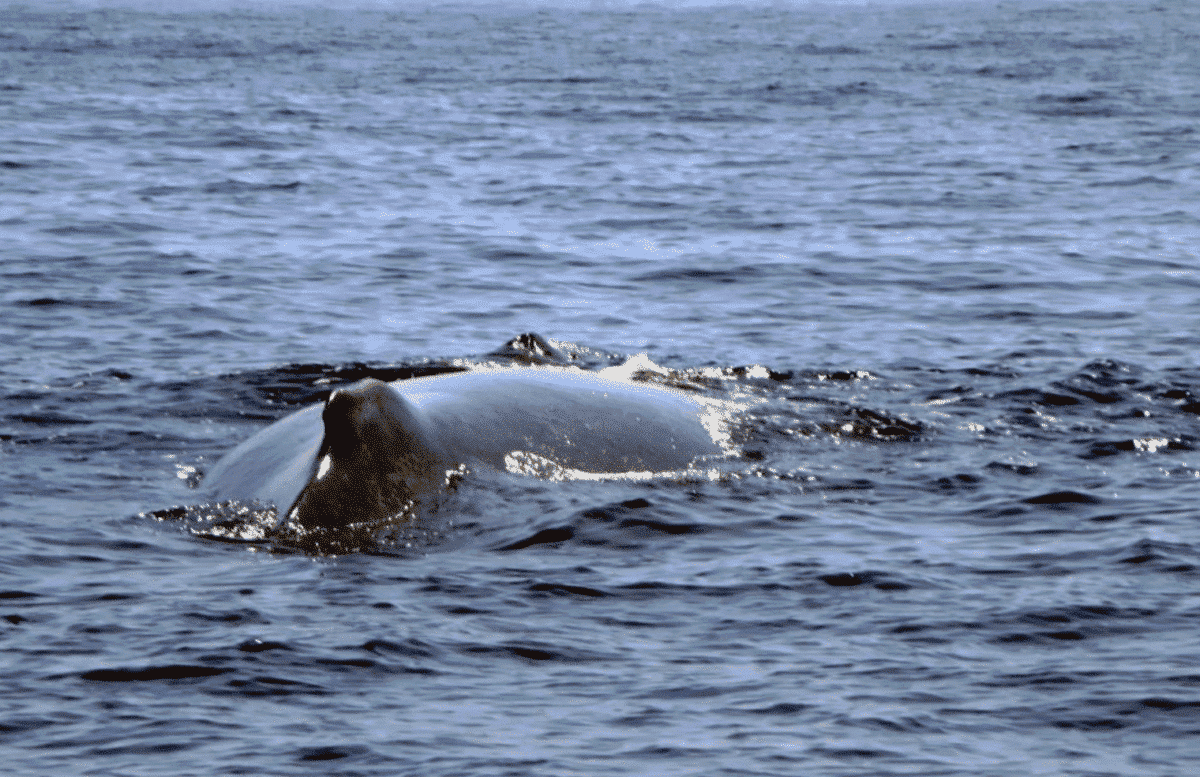
Whale logging involves a resting behavior where a whale remains motionless at the water’s surface. This passive activity serves as a period of rest for the whale, allowing it to conserve energy while being able to breathe. It is a behavior observed in all whale species, offering researchers insights into their resting patterns. Understanding whale logging contributes to our broader comprehension of their daily activity cycles and the various strategies they employ to balance energy expenditure in their dynamic marine environments.
7. Flipper Slapping
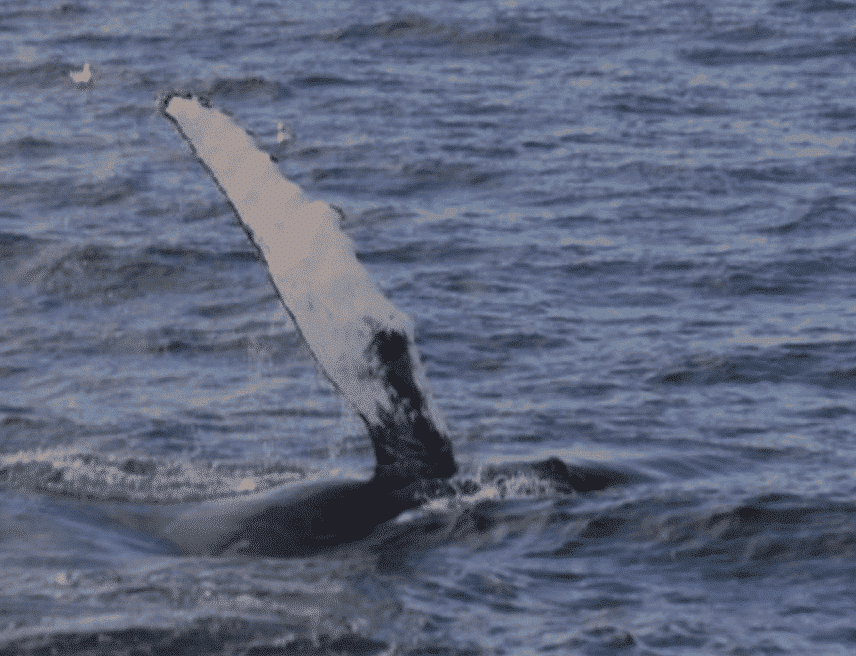
Flipper slapping is a behavior observed in both whales and dolphins, as well as sea lions and fur seals. Similar to lobtailing, this action involves striking the water’s surface with both the ventrum and dorsum of the flipper. The resulting percussive sound is audible in the air, though less pronounced underwater. Along with breaching, flipper slapping is thought to be among the most important aerial displays.
Final thoughts on whale behaviors
Whales are protected by the law and have been in the USA since the Marine Mammals Protection Act of 1972. Therefore, it is imperative to respect the safety of whales and other marine mammals. One way to ensure you respect these animals is by maintaining a safe distance and doing what you can to protect wild spaces. Utilising long-lens cameras and binoculars is a great way of observing whales and other marine life without causing them distress and harm.
What do you think about whale watching behaviours? Leave a comment below.
Thank you for following along with this article – Top Whale Watching Behaviours Explained.
You may also like:
- Why Whales Breach?
- Why Whales Wear Kelp Hats? Scientists Have Uncovered The Truth Behind This Bizarre Behaviour
- Watch: Humpback Whales Breach in Perfect Synchronization
- Watch As Giant Whale Jumps Out Of Nowhere
Key References
Pacheco, A. S., Silva, S., Alcorta, B., Balducci, N., Guidino, C., Llapapasca, M. A., & Sanchez-Salazar, F. (2013). Aerial behavior of humpback whales Megaptera novaeangliae at the southern limit of the southeast Pacific breeding area. Revista de Biología Marina y Oceanografía, 48(1), 185–191. https://doi.org/10.4067/s0718-19572013000100016
Würsig, B., & Whitehead, H. (2009). Aerial behavior. Encyclopedia of Marine Mammals, 5–11. https://doi.org/10.1016/B978-0-12-373553-9.00003-1
Join our Forum for free today!

- Shocking Survey Results of only 718 Snow Leopards Identified in India - July 18, 2024
- Do Octopuses Punch Fish For No Reason? - July 5, 2024
- Brave Farm Animals Save Chicken Friend FromHawk - June 30, 2024

